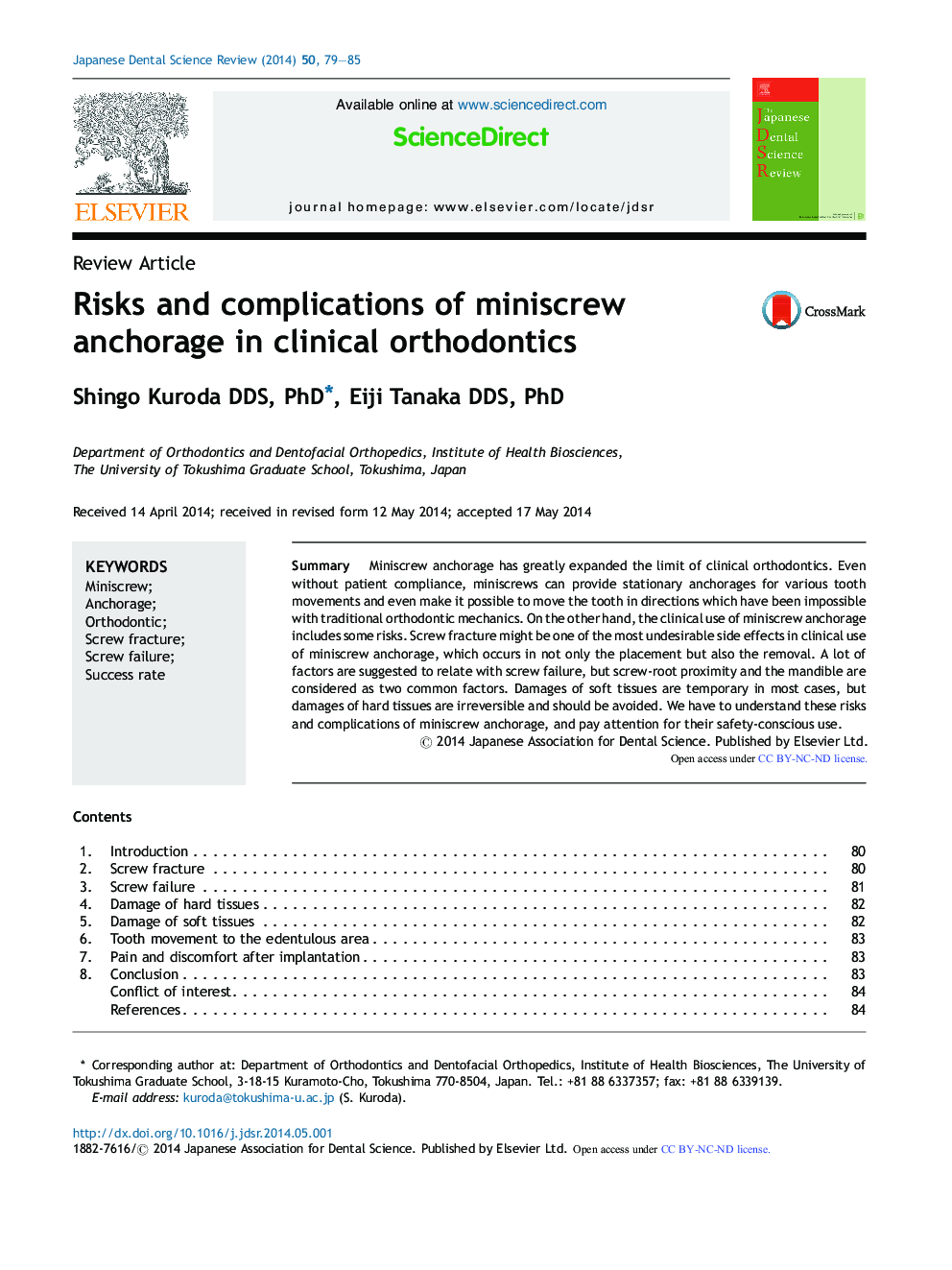| Article ID | Journal | Published Year | Pages | File Type |
|---|---|---|---|---|
| 3136170 | Japanese Dental Science Review | 2014 | 7 Pages |
SummaryMiniscrew anchorage has greatly expanded the limit of clinical orthodontics. Even without patient compliance, miniscrews can provide stationary anchorages for various tooth movements and even make it possible to move the tooth in directions which have been impossible with traditional orthodontic mechanics. On the other hand, the clinical use of miniscrew anchorage includes some risks. Screw fracture might be one of the most undesirable side effects in clinical use of miniscrew anchorage, which occurs in not only the placement but also the removal. A lot of factors are suggested to relate with screw failure, but screw-root proximity and the mandible are considered as two common factors. Damages of soft tissues are temporary in most cases, but damages of hard tissues are irreversible and should be avoided. We have to understand these risks and complications of miniscrew anchorage, and pay attention for their safety-conscious use.
